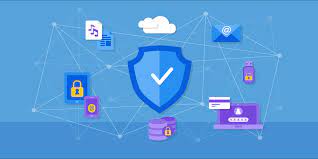Introduction to WordPress Hacks
WordPress Hacks- WordPress is the most popular content management system (CMS) on the internet, powering over 40% of all websites. Its popularity makes it a prime target for hackers looking to exploit vulnerabilities.
A hacked WordPress site can lead to various issues, including data breaches, SEO penalties, and loss of reputation. In this article, we’ll explore five WordPress hacks, their prevention, and recovery strategies.

What is a WordPress Website?
WordPress is a popular content management system (CMS) that allows users to create and manage websites and blogs. It provides a user-friendly interface, making it accessible for individuals and businesses without extensive technical knowledge. WordPress is known for its versatility and flexibility, making it suitable for a wide range of website types, from simple blogs to complex e-commerce stores and corporate websites.
Key features of WordPress include:
- Themes: WordPress offers a vast library of pre-designed templates, known as themes. These themes allow users to change the appearance and layout of their websites with just a few clicks. There are both free and premium themes available.
- Plugins: WordPress has a rich ecosystem of plugins, which are add-ons that extend the functionality of a website. These can be used to add features like contact forms, social media integration, SEO tools, and much more.
- Content Management: It excels in content management, allowing users to easily create, edit, and organize various types of content, such as text, images, videos, and more. It supports multiple content types including posts, pages, and custom content types.
- SEO-Friendly: WordPress is inherently structured to be search engine friendly. It generates clean and semantic code, provides options for meta tags, and supports plugins like Yoast SEO for further optimization.
- User Management: WordPress allows for the creation of multiple user accounts with different levels of access. This is particularly useful for websites with multiple contributors or teams.
- Media Management: It provides a user-friendly media library to upload, organize, and manage images, videos, and other media files.
- Mobile Responsiveness: Modern WordPress themes are designed to be mobile-friendly, ensuring that websites are accessible and display well on various devices, including smartphones and tablets.
- Community and Support: WordPress has a large and active community of users and developers. This means there is a wealth of online resources, forums, tutorials, and documentation available for troubleshooting and learning.
- Scalability: WordPress is capable of handling websites of all sizes. Whether you have a personal blog or a large e-commerce site with thousands of products, WordPress can accommodate your needs.
- Security: While WordPress itself is secure, it’s crucial to keep it up-to-date and implement best practices for security. This includes using strong passwords, keeping plugins and themes updated, and using security plugins.
Table of Contents
WordPress Hacked Site
When your WordPress site gets hacked, it can be a daunting experience. Recognizing when your WordPress site has been compromised is crucial for a swift response. Some common signs of a hacked site include:

a. Unwanted Content: Hackers may inject malicious code or spammy content into your website, leading to strange pop-ups, ads, or links on your pages.
b. Unauthorized Access: If you notice unfamiliar user accounts or changes in user roles, it could indicate unauthorized access.
c. Site Defacement: Hackers may replace your website’s content with their messages or deface it in some way.
d. Slow Performance: Hacked sites often experience decreased performance due to the added burden of malicious code.
Prevention: To protect your site from being hacked, keep WordPress, themes, and plugins up to date. Use strong and unique passwords, implement two-factor authentication, and regularly back up your site. Install a security plugin like Wordfence or Sucuri Security to monitor and block suspicious activities.

WordPress Site Hacked: How to Fix
If your WordPress site is hacked How to Fix it? , immediate action is crucial. Here’s a step-by-step guide to fixing it:
a. Identify the Hack: Determine the extent of the hack, such as which files or databases are compromised, and take your site offline temporarily.
b. Scan and Clean: Use a security plugin or hire a professional to scan and clean your site. Remove any suspicious code, files, or backdoors that hackers may have added.
c. Change Passwords: Reset all passwords, including those for WordPress, FTP, and your hosting account. Ensure they are strong and unique.
d. Update Everything: Update WordPress, themes, and plugins to the latest versions to patch vulnerabilities.
e. Reinstall WordPress Core: If the hack is severe, consider reinstalling the WordPress core files to ensure a clean start.
f. Monitor and Harden: Implement security best practices to harden your site’s defenses. Regularly monitor for unusual activity and keep backups up to date.
WordPress Clean Hacked Site
Cleaning a hacked site thoroughly is vital to prevent re-infection. Follow these cleaning steps:
a. Database Cleanup: Check your database for any suspicious entries or modifications, and remove them.
b. File Cleanup: Scan all files for malware, suspicious scripts, and unauthorized modifications. Delete or replace compromised files.
c. Verify Integrity: Compare your core WordPress files with the official release to ensure none have been tampered with.
d. Remove Malicious Users: Delete any suspicious user accounts and change user roles as needed.
e. Check .htaccess and wp-config.php: Look for any unusual code in these critical files and remove it.
f. Harden Security: Strengthen your site’s security by implementing security headers, firewalls, and security plugins.
WordPress Theme Hack
WordPress Theme Hack: Themes play a significant role in WordPress websites. A compromised theme can open doors for hackers. Here’s how to deal with a hacked WordPress theme:
a. Disable the Theme: Deactivate the hacked theme from the WordPress admin dashboard.
b. Delete the Theme: Remove the compromised theme completely from your server.
c. Scan for Malware: Use a security plugin to scan your site for malware and malicious code.
d. Update Themes: Always use reputable, regularly updated themes from trusted sources.
e. Change Passwords: Change your passwords and those of any users who may have had access to the theme files.
Hack WordPress Website
As website owners, it’s essential to understand how hackers can target WordPress sites:
a. Vulnerabilities: Hackers exploit outdated software, themes, and plugins with known vulnerabilities.
b. Weak Passwords: Brute-force attacks are common, so use strong, unique passwords.
c. Insecure Hosting: Poorly secured hosting environments can make your site vulnerable.
d. Lack of Monitoring: Failing to monitor your site for suspicious activities can lead to unnoticed breaches.
e. Malware Injection: Hackers may inject malicious code or malware into your site.
To protect your WordPress website, follow best practices, regularly update everything, use strong passwords, and invest in reliable hosting and security plugins.
Conclusion WordPress Hacks
WordPress hacks are a serious threat, but with vigilance, proactive security measures, and knowledge of how to clean and recover a hacked site, you can protect your website and online presence. Remember that prevention is the best defense, so keep your WordPress site updated and secure to minimize the risk of a successful hack.

